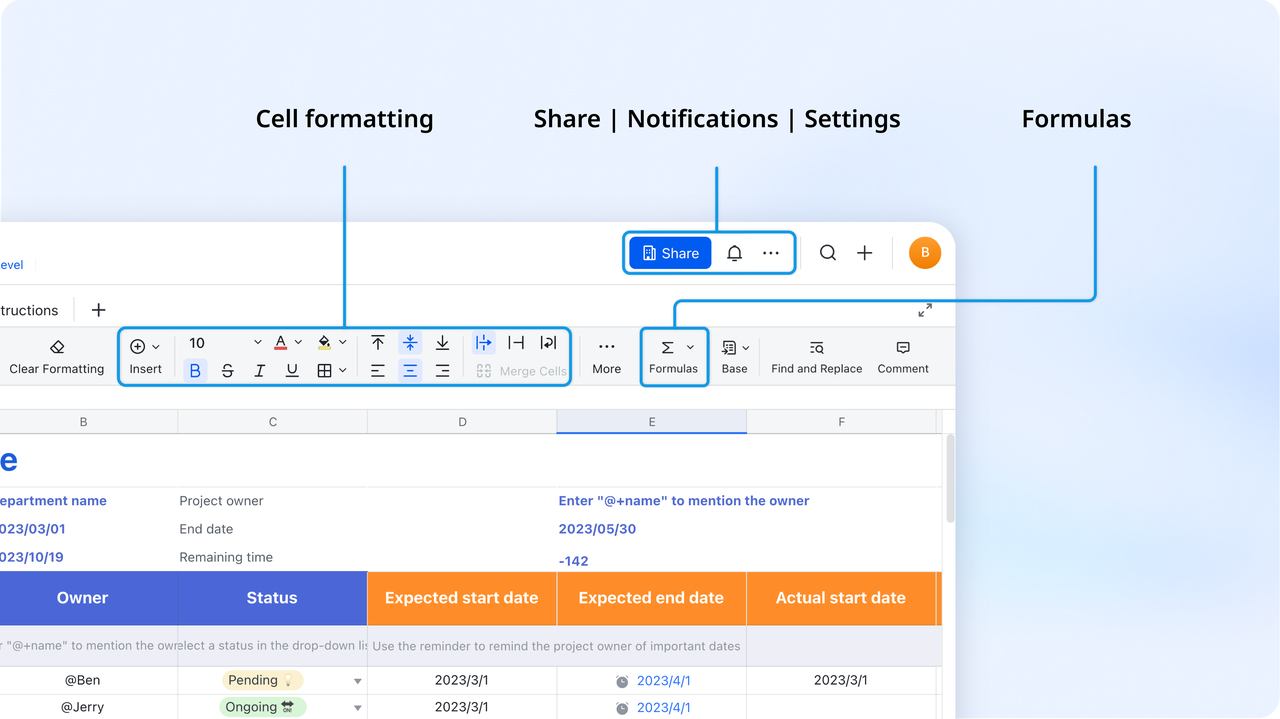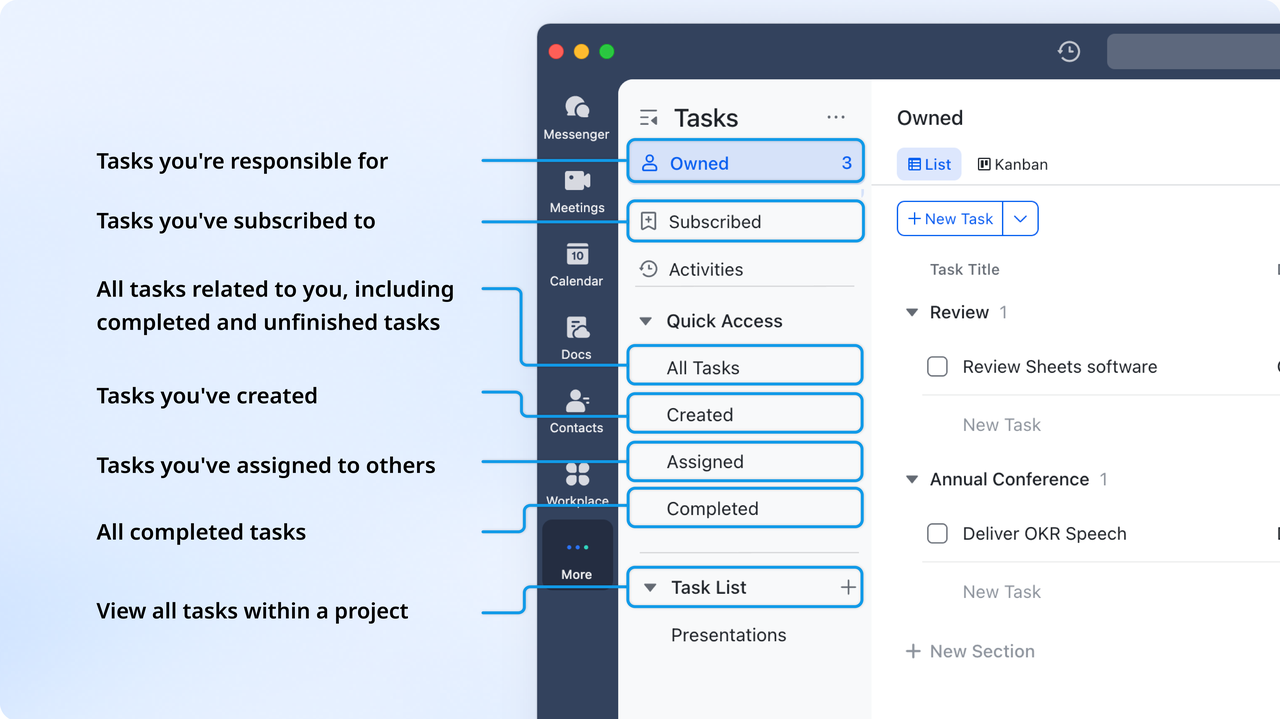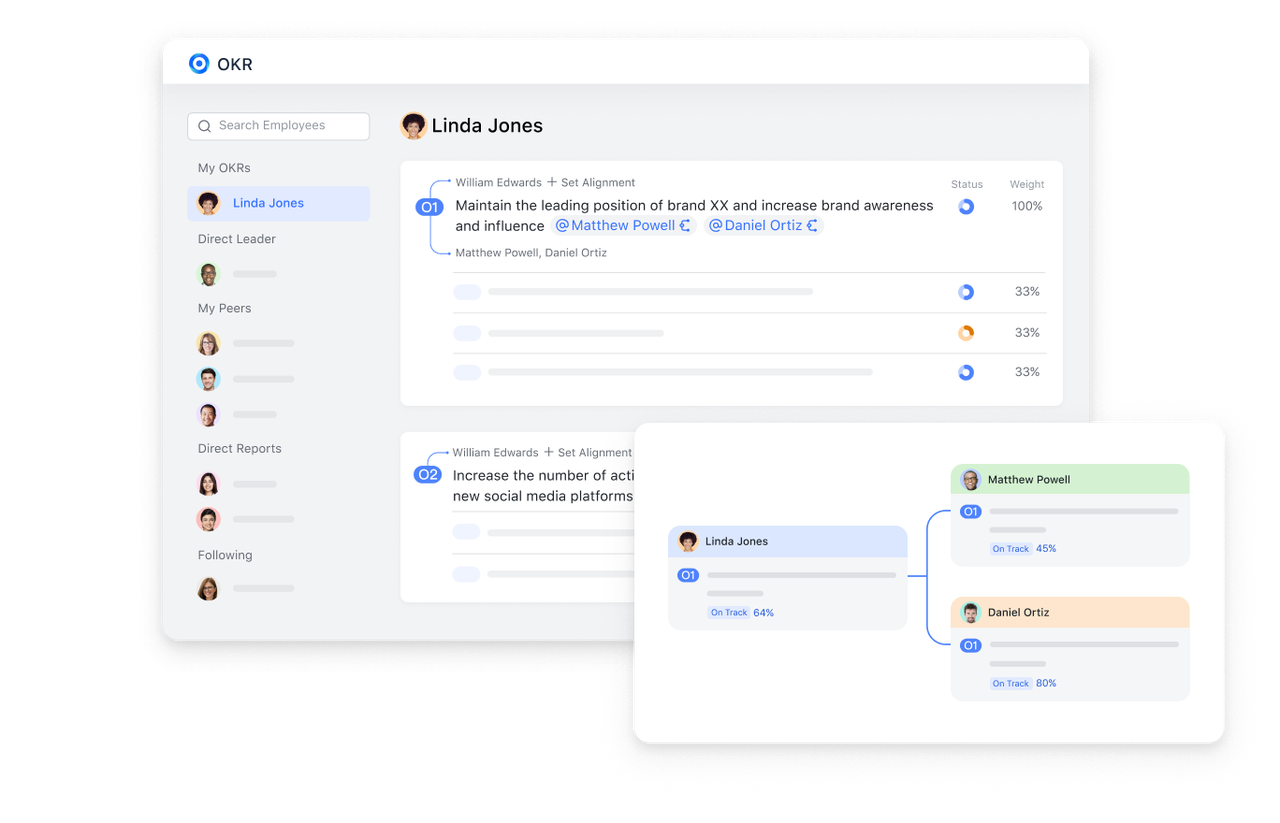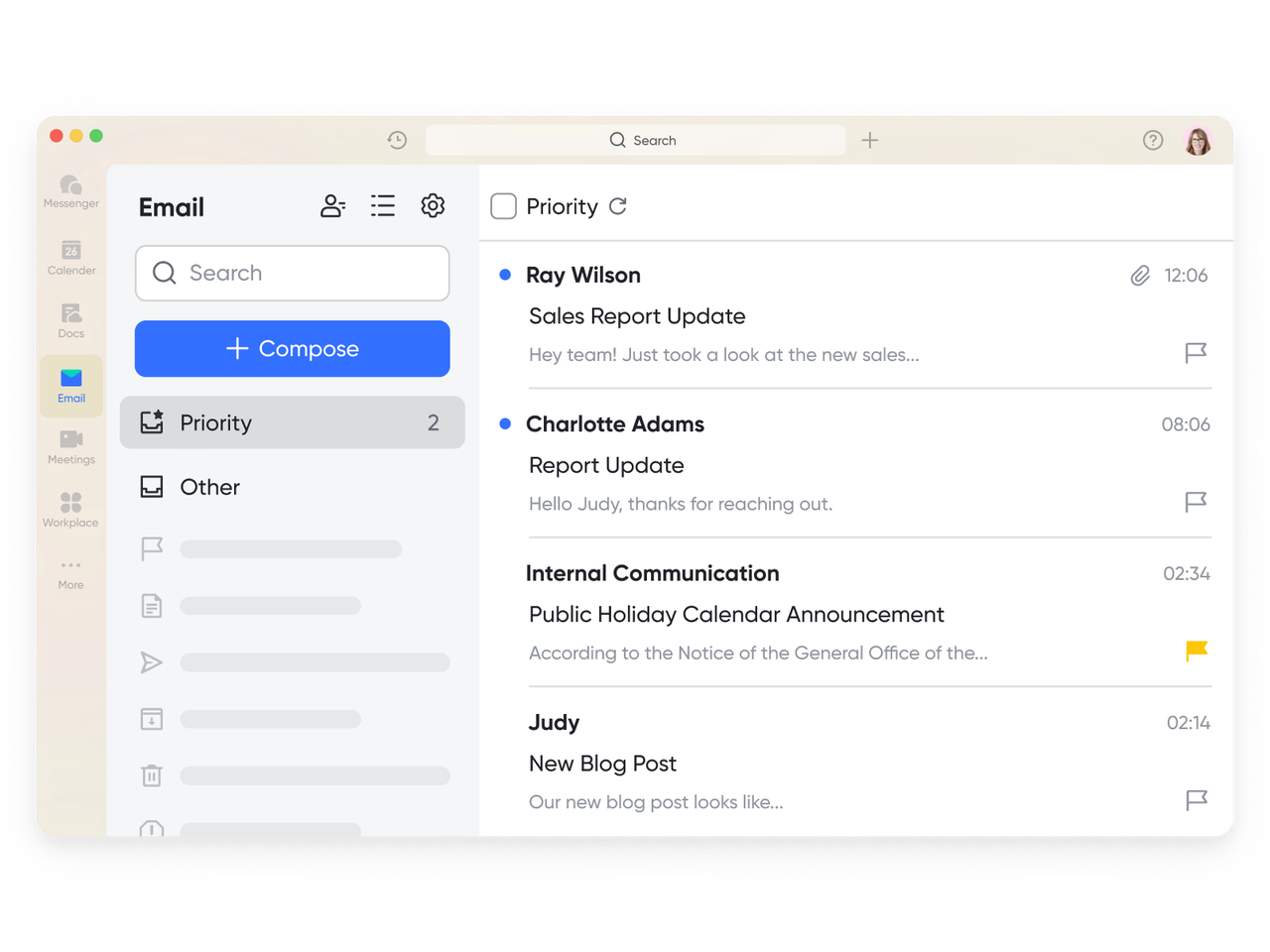Today, teams need to become faster to remain competitive, yet speed without purpose usually leads to mistakes, duplication, and lost deadlines. While flexibility is necessary for innovation and to face new challenges, without structure, that flexibility can become chaos. Meanwhile, structured or rigid systems may create consistency, but can also slow projects down. The answer is a set of tools that encompass both—members of teams will work with freedom while creating accountability.
This is why organizations are increasingly turning to project management tools that unify communication, data, and workflows. By combining flexibility with structure, digital platforms allow employees to focus on creative problem-solving while leadership gains the visibility and order needed to keep execution on track.
Lark Wiki: Flexibility in capturing knowledge, structure in making it usable
 One of the hardest things for teams that work quickly is making sure that important information doesn’t get lost in the mix. In chats or meetings, employees can share their thoughts, but those thoughts quickly fade if there isn’t a structured way to write them down. Lark Wiki strikes a balance by letting anyone write and edit knowledge pages whenever they feel like it, while still keeping a structured, searchable archive. This means that project lessons, compliance policies, or onboarding guides can grow naturally while still being easy to find and follow. Wiki lets people add to it without slowing things down, and it makes sure that the organization has a reliable place to look back on for future work.
One of the hardest things for teams that work quickly is making sure that important information doesn’t get lost in the mix. In chats or meetings, employees can share their thoughts, but those thoughts quickly fade if there isn’t a structured way to write them down. Lark Wiki strikes a balance by letting anyone write and edit knowledge pages whenever they feel like it, while still keeping a structured, searchable archive. This means that project lessons, compliance policies, or onboarding guides can grow naturally while still being easy to find and follow. Wiki lets people add to it without slowing things down, and it makes sure that the organization has a reliable place to look back on for future work.Lark Sheets: Flexibility in collaboration, structure in data
 Data-driven decisions need to be accurate, but too often, spreadsheets get broken up and spread out across emails and folders. Teams need to be able to quickly update information, and managers need to be sure that the numbers are correct. Lark Sheets meets both needs by letting people work together on a single, up-to-date file in real time. Teams can change metrics or track KPIs in a flexible way, and Sheets give leaders a structured view of performance. Data isn’t kept in separate places because Sheets connects directly to other Lark tools. Instead, it becomes part of the larger workflow. The end result is a system that lets employees play with data while making sure that management always has a reliable source of truth.
Data-driven decisions need to be accurate, but too often, spreadsheets get broken up and spread out across emails and folders. Teams need to be able to quickly update information, and managers need to be sure that the numbers are correct. Lark Sheets meets both needs by letting people work together on a single, up-to-date file in real time. Teams can change metrics or track KPIs in a flexible way, and Sheets give leaders a structured view of performance. Data isn’t kept in separate places because Sheets connects directly to other Lark tools. Instead, it becomes part of the larger workflow. The end result is a system that lets employees play with data while making sure that management always has a reliable source of truth.Lark Tasks: Flexibility in work ownership, structure in accountability
 The most common place for structure and flexibility to clash is in task management. As things change, employees want to change their priorities, move their responsibilities, and change their deadlines. But managers need to be clear about who owns what and who is responsible for what. Lark Tasks finds the right balance by letting workers make and change tasks right away and giving managers a way to see how things are going. Deadlines, ownership, and dependencies are still clear, which gives teams the structure they need to avoid getting confused.
The most common place for structure and flexibility to clash is in task management. As things change, employees want to change their priorities, move their responsibilities, and change their deadlines. But managers need to be clear about who owns what and who is responsible for what. Lark Tasks finds the right balance by letting workers make and change tasks right away and giving managers a way to see how things are going. Deadlines, ownership, and dependencies are still clear, which gives teams the structure they need to avoid getting confused.Lark OKR: Flexibility in objectives, structure in measurement
 Setting goals requires flexibility because priorities and market conditions can change quickly. But goals that change too much might not have the same effect. Lark OKR helps businesses find the right balance by letting goals change while also giving them structured ways to track progress. Employees can see how their work fits into the bigger picture of the company’s goals and change their efforts as strategies change. At the same time, managers can clearly see how well each team is doing, which keeps everyone accountable. OKR makes sure that goals are both flexible and measurable, so that flexibility doesn’t weaken focus but instead strengthens alignment.
Setting goals requires flexibility because priorities and market conditions can change quickly. But goals that change too much might not have the same effect. Lark OKR helps businesses find the right balance by letting goals change while also giving them structured ways to track progress. Employees can see how their work fits into the bigger picture of the company’s goals and change their efforts as strategies change. At the same time, managers can clearly see how well each team is doing, which keeps everyone accountable. OKR makes sure that goals are both flexible and measurable, so that flexibility doesn’t weaken focus but instead strengthens alignment.Lark Mail: Flexibility in communication, structure in oversight
 Email is still an important tool for working with people outside of your company, whether it’s to keep clients up to date or to negotiate with vendors. Employees need to be able to respond quickly, but companies also need structured oversight to make sure that communication is professional and can be tracked. Lark Mail strikes that balance by bringing outside emails into the same space where work is done inside the company. Shared inboxes and archiving keep everyone on the same page, and security controls make sure that sensitive communications stay compliant. This lets employees talk to each other freely without hurting governance, which strikes a balance between being responsible and being responsive.
Email is still an important tool for working with people outside of your company, whether it’s to keep clients up to date or to negotiate with vendors. Employees need to be able to respond quickly, but companies also need structured oversight to make sure that communication is professional and can be tracked. Lark Mail strikes that balance by bringing outside emails into the same space where work is done inside the company. Shared inboxes and archiving keep everyone on the same page, and security controls make sure that sensitive communications stay compliant. This lets employees talk to each other freely without hurting governance, which strikes a balance between being responsible and being responsive.Lark Base: Flexibility for teams, structure for leadership
 Data management is the key to finding the right balance between flexibility and structure. Teams often need to be able to change records to fit their own workflows, but leaders need to know that the data is always correct and consistent. Lark Base lets you do both by letting you make databases that are tailored to the needs of your team without losing alignment. Teams can track projects, clients, or compliance data, and dashboards provide leaders with a structured, high-level view of their progress. With automated workflow, Base connects Tasks, Docs, and Approvals seamlessly, thanks to filters and linked records, making it a single source of truth.
Data management is the key to finding the right balance between flexibility and structure. Teams often need to be able to change records to fit their own workflows, but leaders need to know that the data is always correct and consistent. Lark Base lets you do both by letting you make databases that are tailored to the needs of your team without losing alignment. Teams can track projects, clients, or compliance data, and dashboards provide leaders with a structured, high-level view of their progress. With automated workflow, Base connects Tasks, Docs, and Approvals seamlessly, thanks to filters and linked records, making it a single source of truth.Conclusion
People often think of flexibility and structure as opposites, but the best teams see them as working together. Too much freedom can cause chaos, and too much rigidity can stop growth. The real benefit comes from making systems where both exist, giving employees the freedom to come up with new ideas and giving leaders faith in their ability to carry them out.
As a project management software, Lark stands as a complete solution. Wiki saves knowledge for the future while it changes. Sheets lets people work together on data while still being able to trust it. Tasks lets you change how you work while holding you accountable with automated workflows. OKR makes sure that goals can change but still be measured. Mail balances being responsive to outside needs with having structured oversight. Base gives you the structural clarity of project management software while also being able to change to fit the needs of each team.
Companies can make teams that move quickly, stay on the same page, and grow well by using digital platforms that combine structure and flexibility. The smartest companies are not choosing one over the other; they are learning how to do both.
 logo
logo


